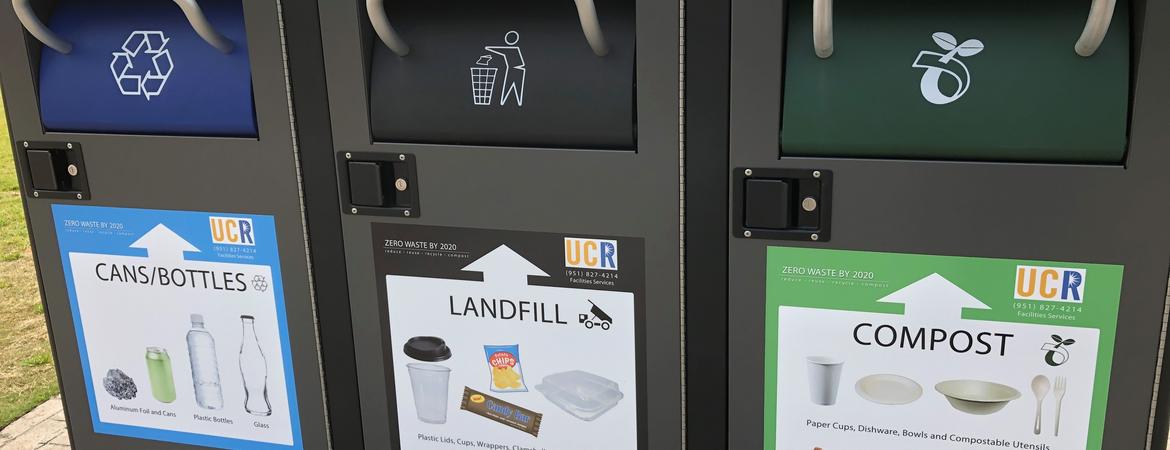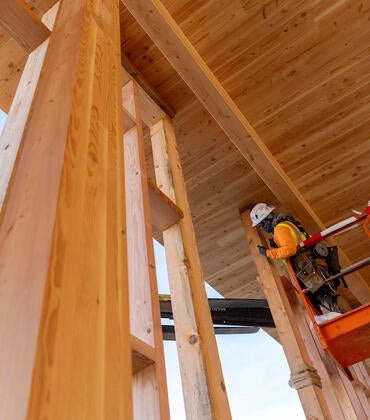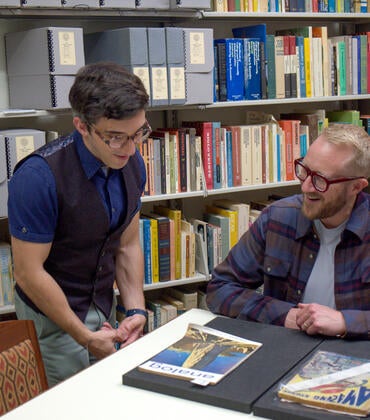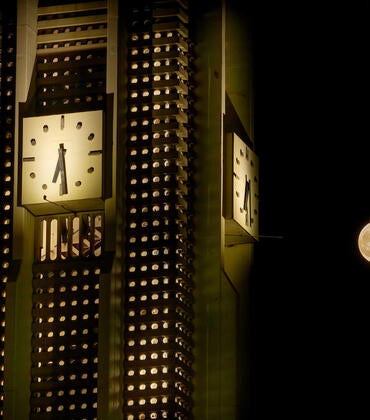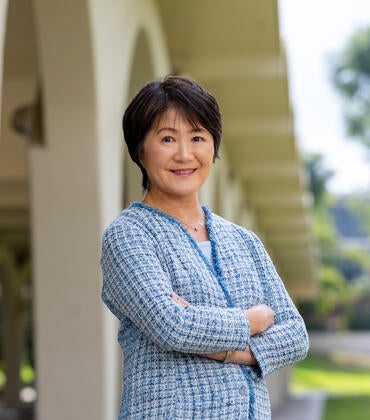UC Riverside is moving toward a smarter way to dispose of waste.
In the last few weeks, rectangular-shaped trash bins that resemble R2-D2 have popped up around the bell tower and Lot 30. The Bigbelly bins — named for their manufacturer — come with solar panels on top that power built-in compactors.
Facilities Services removed 20 of the traditional concrete barrel-shaped containers while adding a total of 12 new high-tech bins on campus.
The Bigbelly bins hold about three times as much as a regular bin because the waste is compacted, said Hassan Ghamlouch, director of environmental and resource services for Facilities Services.
They are equipped with GPS and an email notification system that alerts crews when the bins are more than 50 percent full. A light on top will flash green, yellow, or red depending on how much trash is inside.
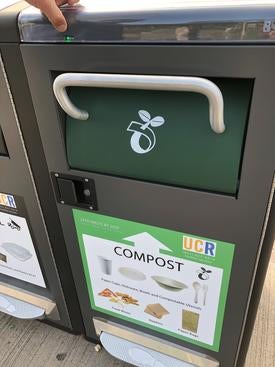
The switch is about more than a different shape or design, Ghamlouch said. It’s a new way of disposing of waste that will improve efficiency and free up space.
The larger capacity and notification system reduce how often the bins need to be emptied, resulting in 54 fewer weekly trips to service them, Ghamlouch said. It also means they need fewer containers to take in the same amount of waste.
“We now have much more open space to enjoy around the HUB,” Ghamlouch said.
The Bigbelly bins are also expected to keep the campus cleaner. A cover that opens with a handle or foot pedal keeps the container enclosed, so there’s no overflow or windblown litter nearby, Ghamlouch said.
The new receptacles are aimed at helping the campus meet the 2020 University of California Zero Waste goal.
The Bigbelly bins placed near the bell tower come in sets of three: one for trash going to the landfill; one for recyclables such as paper, aluminum, and glass; and — in a first for the campus — one for compost.
“The new policy is to normalize recycling, introduce composting, and minimize the generation of waste,” Ghamlouch said.
Facilities Services will monitor use of the new bins and plans to introduce them in coming months to other locations. So far, they are planned for the new Multidisciplinary Research Building, Bytes in Winston Chung Hall, and the planned Mobility Hub, opening in the fall.
